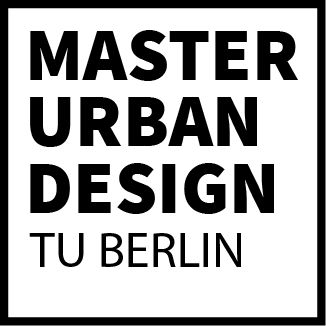 Urban Design Studio 2023/2024
Urban Design Studio 2023/2024
Tutors: Juliana Canedo, Christian Haid, Anke Hagemann
Chair: Habitat Unit
Students: Muchun Li, Johanna Scocco, Omar Tbakhi, Seyda Bulbul, Hao Qian

How can timber become a sustainable construction material?
As emissions from the construction industry significantly contribute to climate change, timber is increasingly advocated as a climate friendly construction material. Paradoxically, intensive forestry for timber production and climate change have weakened a large part of Germany‘s forests, and many forests are in a critical state of vulnerability, evident in among other examples the devastating effects of the bark beetle.
 This dilemma poses the question of whether using timber as a construction material is actually a bandaid, a quickfix to continue a business-as-usual way of building cities and exploiting natural resources, or a possible path to a sustainable future. Further it raises questions of where the wood comes from and the risk of outsourcing forest exploitation through timber imports.
This dilemma poses the question of whether using timber as a construction material is actually a bandaid, a quickfix to continue a business-as-usual way of building cities and exploiting natural resources, or a possible path to a sustainable future. Further it raises questions of where the wood comes from and the risk of outsourcing forest exploitation through timber imports.
With our field work and analysis of the Angermünde City Forest we have, through actor network and supply chain analysis, strived to look beyond embodied carbon estimates to investigate how forestry processes interact with the urban-rural linkages, relations, and ecosystems of forests. We have identified human and non-human, local, regional, national and international actors, conflicts of usage and varying perspectives on the needs of the forest, as well as varying supply chain routes, processes and challenges to the timber industry such as fluctuating markets, bottleneck effects and high export levels as well as a complex, hard to navigate, network of independent actors.
 In our scenario construction we have been guided by the question: (How) can timber become a sustainable construction material? Sustainability is here defined as meeting the current ecological, social and economical needs without compromising the possibility of meeting future needs. For the environmental sustainability, we have identified two crucial aspects, which are locally sourcing timber and maintaining the biodiversity and resilience of forests. The social sustainability aspect entails that timber is sourced with care for the recreational and cultural values of the forest. Finally, economic sustainability means that timber is an actually financially viable construction material while fulfilling above criteria.
In our scenario construction we have been guided by the question: (How) can timber become a sustainable construction material? Sustainability is here defined as meeting the current ecological, social and economical needs without compromising the possibility of meeting future needs. For the environmental sustainability, we have identified two crucial aspects, which are locally sourcing timber and maintaining the biodiversity and resilience of forests. The social sustainability aspect entails that timber is sourced with care for the recreational and cultural values of the forest. Finally, economic sustainability means that timber is an actually financially viable construction material while fulfilling above criteria.
 In our scenarios, we seek to tackle this question in two temporal and spatial scales, with one largescale scenario in the more distant future and one small scale scenario set in the near future. The overall aim is to connect the urban and the forest, as well as other land uses, and the various stakeholder involved. Identifying a divided market, we want to connect a multitude of stakeholders knowledges to bridge conflicts and sectoral separation to reach new knowledge about how these actors can work together.
In our scenarios, we seek to tackle this question in two temporal and spatial scales, with one largescale scenario in the more distant future and one small scale scenario set in the near future. The overall aim is to connect the urban and the forest, as well as other land uses, and the various stakeholder involved. Identifying a divided market, we want to connect a multitude of stakeholders knowledges to bridge conflicts and sectoral separation to reach new knowledge about how these actors can work together.

In our large scale scenario, we suggest an increased local interconnection between forest, rural and urban. Through agroforestry practices and letting the forest into the city, we envision a future where timber can be produced for construction materials in a local way rather than being exported and imported over long distances. We further envision a transformation of current coniferous forests into mixed, more biodiverse, forests.
In our small scale scenario, we wish to set a co-creative process in motion, giving incentive to a number of stakeholders to come together and identify opportunities, challenges and solutions to sustainably using timber for local construction in Angermünde Weststadt. Viewing the urban designer as a mediator, we want to connect the different stakeholders to create a shift towards local supply chains, a transparent network of actors and material flows, and raise awareness of how timber can be sourced, the needs of the forests, and which local cultural and social values the forest can hold. Bringing all stakeholders together in a pilot project, we put the potential of timber construction to a test.



